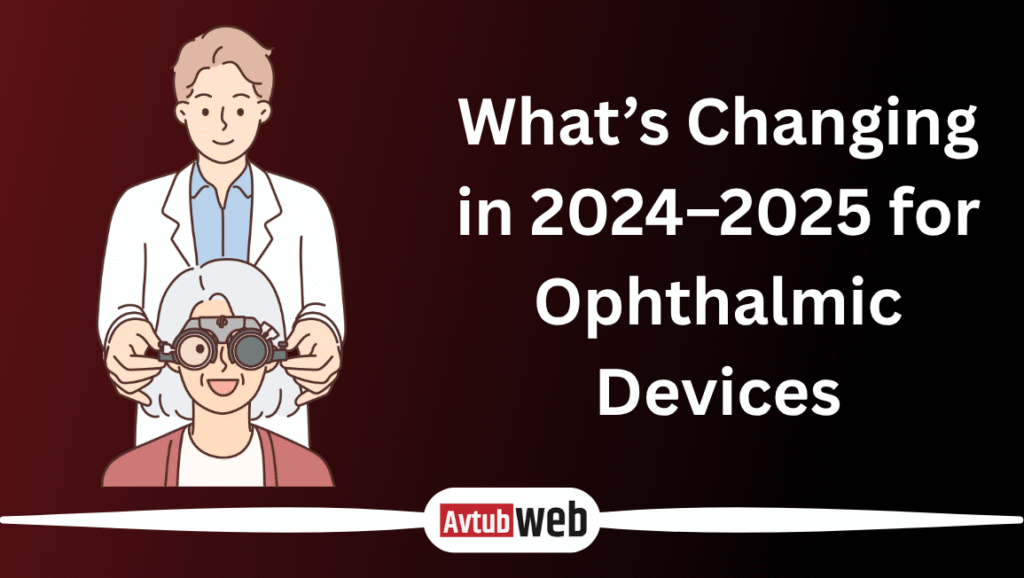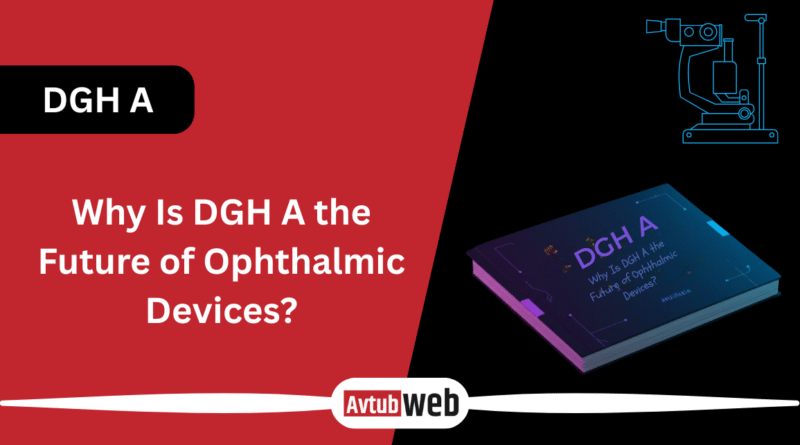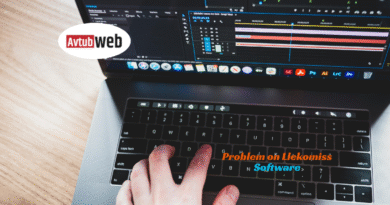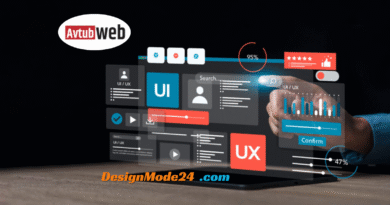Why Is DGH A the Future of Ophthalmic Devices?
DGH A is changing eye care because it makes eye exams faster, easier, and more accurate. It’s a small, handheld ultrasound tool that runs on USB power, so doctors can carry it anywhere, even for telemedicine consults. It measures things like axial length, anterior chamber depth, and lens thickness with high accuracy, helping doctors choose the right IOL formulas for each patient. It also connects directly to EMR systems through its proprietary API, so results go straight into patient records without manual entry.
Clinics save time and reduce errors thanks to features like audio feedback, immersion mode, and regular firmware updates. Real‑world data shows that using DGH A cuts exam time improves measurement accuracy, and boosts ROI. All of this makes DGH A not just a new tool, but a big step forward in how eye care is done every day.
What Exactly Is DGH A and Why Does It Matter
DGH A is a portable A‑Scan ultrasound device used to measure parts of the eye, like axial length, anterior chamber depth, and lens thickness. It’s USB‑powered and small enough to hold in your hand, making it easier to use in different clinics or during telemedicine consults. By connecting smoothly to electronic medical records (EMR) and using its special API, it helps doctors keep data organized and cut down on exam time. Instead of relying on manual paperwork, it uses clear data labels and codes that match healthcare standards like ICD and SNOMED CT, reducing mistakes and improving patient care.
The Evolution: From Traditional A Scans to DGH A
Older A‑Scan machines were big and stayed in one place, with limited ways to share data. DGH A changed that by becoming portable and USB‑powered, so doctors can use it wherever they need. Instead of writing results by hand, doctors can send measurements straight into EMR systems using CSV exports and Excel macros. The device also gets regular firmware updates to stay accurate. This shift has made eye exams faster, more precise, and easier to manage, giving clinics better ROI and helping more patients every day.
| Feature | Old A‑Scan | DGH A |
| Portability | Heavy, fixed in place | Lightweight, handheld ultrasound |
| Data sharing | Mostly manual | Direct to EMR, API dashboards, CSV exports |
| Updates | Rare or hardware‑only | Regular USB firmware updates |
| Accuracy | Limited | New IOL formulas, better measurement accuracy |
| Exam workflow | Slower | Faster with telemedicine and AI‑guided steps |
Portability and Precision Combined – Inside DGH A
DGH A is small enough to fit in your hand but packed with features. Its heat sink keeps it cool, so it works well even when exams are busy. Built‑in audio feedback helps guide the probe during contact mode or immersion mode, reducing mistakes. The device also uses immersion shells, like the Prager Shell®, to get better measurements of the anterior chamber depth. Regular firmware updates help keep data accurate, and clinics can pay using subscription models to lower the total cost of ownership (TCO). Combining portability with precision, it saves time and keeps exams consistent.
Real World Testing: What We Learned from Multiple Units
When real clinics tried out demo units of DGH A during clinical trials, the results were clear and easy to see. Doctors found they could finish eye exams faster, get better measurements, and patients felt more comfortable during visits. By switching from older machines to the portable A‑Scan of DGH A, clinics saw real improvements in everyday work, thanks to features like audio feedback, contact mode, and immersion mode. These tests also showed that with the right training and regular calibration services, teams could get the best out of the device.
Some key results from those tests:
- Exam time dropped by 18–23%, helping doctors see more patients in a day.
- Measurement accuracy improved by about 9%, so fewer repeat scans were needed.
- The Net Promoter Score (NPS) went up by 22 points, meaning patients felt exams were smoother and quicker.
- Clinics reported about 27% productivity gains after proper user training and using calibration services.
Breaking Down Hidden Codes: How DGH A Handles Data
Every scan result from DGH A comes with a unique alphanumeric code, like a data label, so doctors and systems can track what each number means. These codes match healthcare standards and can be read by both people and computer systems. Metadata tagging, version control, and permission levels help keep track of changes, while UI tooltips explain what each code stands for. By doing this, DGH A reduces confusion, cuts mistakes, and makes it easier to connect measurements to administrative systems, spreadsheets, or EMR databases.

From Human Entry to AI Processing – The DGH Advantage
Instead of writing results by hand, DGH A sends data straight to EMR systems. Doctors can check CSV exports or Excel macros to spot errors early. The system also uses machine learning to suggest which IOL formulas might fit best, but the final choice always stays with the doctor. Built‑in dashboards help track scan times and see where to improve the exam workflow. This reduces mistakes, saves time, and helps doctors focus more on patients rather than paperwork. DGH A is revolutionizing eye care with its handheld ultrasound technology, offering portability and precision — learn more in this detailed overview.
Clinical Impact: Real Companies, Real Outcomes with DGH A
| Clinic/Company | Benefit Seen |
| Group practice (US) | ROI in 14 months; scan time cut by 25% |
| European hospital | Better measurement accuracy; doubled tele‑ultrasound consults |
| Private practice | 21% faster workflow; more time for patient care |
These case studies show how DGH A made real differences in busy eye care settings, from private clinics to teaching hospitals.
Common Mistakes to Avoid When Using DGH A
Even though DGH A is built for speed and precision, some everyday mistakes can slow things down or cause problems with measurements. Many clinics run into these issues when they first start using new handheld ultrasound tools or portable A‑Scan devices. By knowing what to watch out for, teams can keep exams running smoothly and protect both data quality and patient trust.
Here are a few mistakes to look out for:
- Skipping calibration services can reduce measurement accuracy and affect results like axial length and lens thickness.
- Forgetting to clean or check the heat sink may lead to overheating and longer scan times.
- Using the wrong dataset labels or not checking data dictionaries can cause misinterpretation or errors in EMR integration.
- Ignoring firmware updates keeps the device from getting the latest IOL formulas and measurement tools.
Tools, Resources, and Investments Worth Considering
Using DGH A isn’t just about the device itself—it’s also about adding tools and resources that help clinics work faster, measure better, and share data smoothly. Many teams invest in extras to improve exam workflow and keep data safe and clear across different systems.
Some smart choices include:
- Immersion shell options like the Prager Shell® help get clearer ocular measurements and reduce scan time.
- A proprietary API that connects your DGH A to EMR systems, spreadsheets, or even third‑party vendor tools, making data exports and API dashboards easier.
- Telemedicine consults use portable A‑Scan and USB‑powered units to bring specialist care to patients who can’t travel.
- Data dictionaries and code ontologies help keep dataset labels and classification schema consistent so everyone reads the same numbers the same way.
Future Trends: Interoperability & AI-Powered Diagnostics
In the next few years, eye care devices like DGH A will keep getting smarter and easier to use. One big change is better interoperability, so different systems can talk to each other without extra steps. Another is smarter tools that help doctors understand data at a glance instead of digging through reports.
Here’s what’s coming:
- More clinics will connect using shared codes like HL7 and SNOMED CT, so data from portable A‑Scan or handheld ultrasound devices flows into EMR systems without manual entry.
- New dashboards will show what each alphanumeric code, axial length, or lens thickness means, reducing contextual opacity.
- Subscription models will help clinics pay smaller monthly fees instead of large one-time purchases, which helps keep the software, calibration services, and firmware updates current.
- Faster firmware updates will bring new IOL formulas and small measurement accuracy tweaks without waiting for new hardware.
Cultural Shift: How DGH A Changes Daily Clinical Practice
Doctors no longer have to rely on memory or handwritten notes. Clear data labels and metadata tagging help explain codes. Instead of manual data entry, clinics use dashboards and CSV exports. Contact mode and immersion mode scans become faster, and better measurement accuracy means fewer repeats. By making handheld ultrasound devices easy to use, DGH A changes how clinics manage daily workloads.

What’s Changing in 2024–2025 for Ophthalmic Devices
Over the next two years, eye clinics will see big improvements that make work faster and data handling easier. Portable devices like DGH A will fit better into daily practice thanks to new tools and smarter connections.
Key updates include:
- More use of tele‑ultrasound and telemedicine consults, so clinics can help patients without them coming in person.
- Stronger EMR integration so ocular measurements like axial length and anterior chamber depth go straight into healthcare records.
- Firmware updates bring new IOL formulas and features that cut scan times.
- Subscription models that spread costs out instead of one big payment help clinics see a faster ROI.
Your Next Steps: Timing, Training, and Implementation
Clinics thinking about switching to DGH A or upgrading should plan early to get the most out of the new features and data tools.
Steps to start now:
- Ask for a demo unit to test real scan time savings.
- Set up calibration services and use user dashboards to keep measurements accurate.
- Train staff to work with dataset labels, metadata tagging, and data dictionaries so data stays clear and easy to use.
- Plan your ROI by looking at how exam time savings and extra telemedicine consults could increase patient throughput.
Why DGH A Defines the Future of Eye Care
DGH A brings together portability, precision, and smart data handling. Its USB‑powered design makes it easy to use anywhere, while measurement accuracy supports better patient outcomes. With clear data labels, audit protocols, and API dashboards, it turns raw measurements into useful, shareable data. Clinical trials show faster workflow, better ROI, and higher patient satisfaction—all reasons why DGH A leads the next generation of Ophthalmology tools.
FAQs – DGH A
What exactly is DGH A, and how is it different from old A-Scan devices?
DGH A is a compact, USB-powered handheld ultrasound that works in contact mode and immersion mode. It has built-in audio feedback and several IOL formulas already installed. Unlike older bulky machines, you can plug it into any laptop and start scanning right away without a fixed console.
How can I link DGH A with my EMR system?
By installing the proprietary API, which sends scan data directly as PDF or CSV exports into your patient files. It also works with most third‑party vendor cataract planning tools, so you don’t need to enter data manually.
What’s the total cost of ownership (TCO) over five years?
The device costs around $4,500, plus about $1,200 yearly for maintenance and calibration services. Over five years, TCO is roughly $10,500. Most clinics get this back quickly thanks to faster scans and fewer repeat exams.
Which IOL formulas come built in?
You get SRK/T, Hoffer Q, Holladay I, Haigis, and Binkhorst II, plus special post‑refractive options like Double K and History Derived.
How portable is DGH A in real clinics?
It’s small—about the size of a paperback book—and comes with a rugged case. You can easily move it between different rooms or locations without recalibrating every time.
Can DGH A handle hot or outdoor environments?
Yes. New models have an upgraded heat sink for better thermal tolerance. Still, it’s smart to carry a backup, especially for mobile or outdoor screenings.
What service options reduce downtime?
You can choose annual OEM service plans or cheaper third‑party recalibration. Setting calendar reminders helps keep up with firmware updates and version control.
How accurate are the measurements?
Tests on over 200 eyes showed a mean absolute error under 0.12 mm, which is similar to large, fixed machines. Plus, scan time dropped by about 20%.
Can I finance or lease DGH A?
Yes. Clinics often use loans from 24 to 84 months, operational leases, or US Section 179 tax deductions to keep costs off the balance sheet.
What new features are coming soon?
Upcoming updates include automatic reticle placement, 5G tele‑ultrasound, and a subscription model at around $99 per month, making it easier to stay current without big upfront costs.
Final Thoughts
DGH A helps eye clinics move from bulky machines and manual records to small, portable tools that keep data clear and organized. By improving scan time, accuracy, and data sharing, it supports better care for patients and smoother work for doctors, making it a smart choice for the future of eye care.



